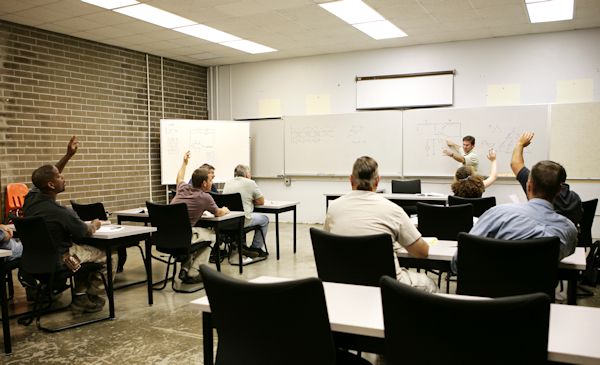The Training Room
Your training room can have a large impact on the success of the training session.

A training room must be arranged in a way that supports the specific learning objectives and accommodates the number of participants effectively. The setup of the space can have a direct impact on how well trainees stay engaged, interact, and retain information. For example, if the goal is to encourage group discussions, seating arranged in a circle or U-shape may work best. If the objective is to practice hands-on skills, open floor space and easy access to materials will be more important than traditional rows of chairs.
In reality, most safety trainers will not have the luxury of choosing the perfect training room every time. The facility might be a small conference room, a noisy breakroom, or even part of the shop floor. Often, trainers must work with whatever space is available—tables that are too large or too small, lighting that’s not ideal, or a layout that doesn’t match the planned activities.
Ultimately, the goal is to adapt the space so it supports learning as much as possible, even when the room is far from ideal. Creative problem-solving and flexibility are key skills for any effective trainer.
Workable Walls
Walls can be great tools during training. You might want to hang flipcharts, session goals, or group work results. Before you plan on using the walls, ask yourself a few things. Are the walls available, or are they covered in windows or art? Is there space near the front of the room where you can hang materials? Try to set the front of the room opposite the entrance, so students aren't distracted by people coming and going. And if you're using markers on paper that's going on the walls, make sure they won't bleed through and damage anything.
Accessible
It's important that your training room is accessible to everyone. Make sure students with disabilities can get in and move around the space easily. That includes checking doorways, seating options, and any equipment you'll be using.
Convenience
Try to choose a room that's close to restrooms, facility phones, and food areas. When students take breaks, they shouldn't have to wander far or rush to get back on time. Keeping everything nearby helps keep the schedule on track and reduces distractions during your session.
Knowledge Check Choose the best answer for the question.
1-5. A training room located near restrooms, rest areas, and snack areas fulfill which criteria below?
You forgot to answer the question!

